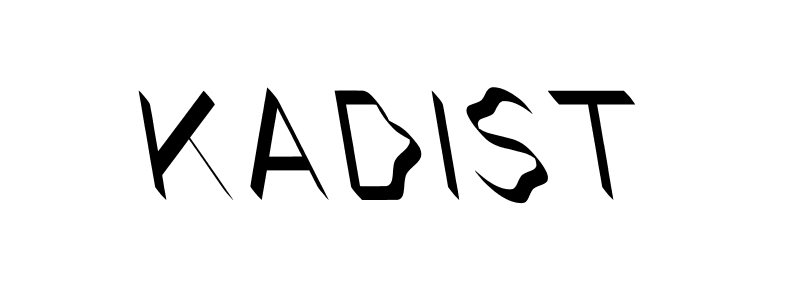
© » KADIST
Nagendra Gurung
Chalis Katesi Ramaula is a series of 240 prints capturing Nagendra Gurung’s life, work, and colleagues from the construction sites where he has worked in Dubai and Saudi Arabia. When seen together, the sequence appears to have a cinematic temporality, as one feels the passing of the years he has endured as a migrant worker. Gurung’s subjectivity is highly present, even when looking at the most banal scenes of cranes, concrete, and other machinery, which are rapidly transforming the landscape and society of the Gulf into its own version of capitalist futurism built through the exploitation of others.

© » KADIST
Shimabuku
For the two-channel work Asking the Repentistas – Peneira & Sonhador – to remix my octopus works Shimabuku asked two Brazilian street singers to compose a ballad about his previous works with octopi (in which he created traditional Japanese ceramic vessels to catch octopi, with a fisherman who took him on his boat to test them out as we can see on one of the channel). In the Brazilian singers’ ballad, Shimabuku is transformed into a fisherman, the greatest fisherman in Japan, but a kindly fisherman who returns his catch to the sea. The artwork thus becomes facilitator for an interaction between different cultures and interpretations.

© » KADIST
Jackie Karuti
The Planets, Chapter 32 (2017) is a short video that depicts the world at a time of great anxiety. However, it is done with a sharp sense of humor. It starts with a voice explaining that Africa will be partially inundated in the coming year, ending with the impossible relationship between the artist and a chatbot (primitive form of artificial intelligence).

© » KADIST
Daniel Gustav Cramer
Drawing & Print (Drawing & Print)
David Gustav Cramer’s are composed of simple, descriptive texts accompanied by found photographs, letters or other materials. The elements juxtaposed in each work operate like the lines of a Haiku. It is the tension between them that opens space for thought.

© » KADIST
Rivane Neuenschwander
Mapa-Mundi BR (postal) is a set of wooden shelves holding postcards that depict locations in Brazil named for foreign countries and cities. When installed, viewers are invited to fill out and mail a postcard to any destination, an act which parallels the dissemination and global circulation of image, text, and the idea of place.

© » KADIST
Doug Aitken
The version of Frontier acquired by the Kadist Collection consists of a single-channel video, adapted from the monumental installation and performance that Aitken presented in Rome, by the Tiber River, in 2009. In this film, Aiken’s allusion to “the frontier” and iconic imagery like the cowboy suggest that the American West Coast as a cultural construction. These notions are reinforced by two key elements in the film: its protagonist, the iconic West Coast artist Ed Ruscha, and its reference to the cinematic and the experience of the movie theater.
Jackie Karuti
Jackie Karuti is an artist based in Nairobi, Kenya...
Nagendra Gurung
Since the mid-2000s, Nagendra Gurung has practiced photography in parallel to his life as a migrant worker in Dubai and Saudi Arabia...
Doug Aitken
- year born: 1968
- gender: male
- nationality: American
- home town: Redondo Beach, California
Shimabuku
Born in 1969 in Kobe, Shimabuku is an artist who collects unusual encounters...
-
2000-2009
Nagendra Gurung
2005Chalis Katesi Ramaula is a series of 240 prints capturing Nagendra Gurung’s life, work, and colleagues from the construction sites where he has worked in Dubai and Saudi Arabia...
Shimabuku
2006For the two-channel work Asking the Repentistas – Peneira & Sonhador – to remix my octopus works Shimabuku asked two Brazilian street singers to compose a ballad about his previous works with octopi (in which he created traditional Japanese ceramic vessels to catch octopi, with a fisherman who took him on his boat to test them out as we can see on one of the channel)...
Rivane Neuenschwander
2007Mapa-Mundi BR (postal) is a set of wooden shelves holding postcards that depict locations in Brazil named for foreign countries and cities...
Doug Aitken
2009The version of Frontier acquired by the Kadist Collection consists of a single-channel video, adapted from the monumental installation and performance that Aitken presented in Rome, by the Tiber River, in 2009...
-
2010-2019
Jackie Karuti
2017The Planets, Chapter 32 (2017) is a short video that depicts the world at a time of great anxiety...
-
2020-2029
Daniel Gustav Cramer
Drawing & Print
2020(Drawing & Print) David Gustav Cramer’s are composed of simple, descriptive texts accompanied by found photographs, letters or other materials...




